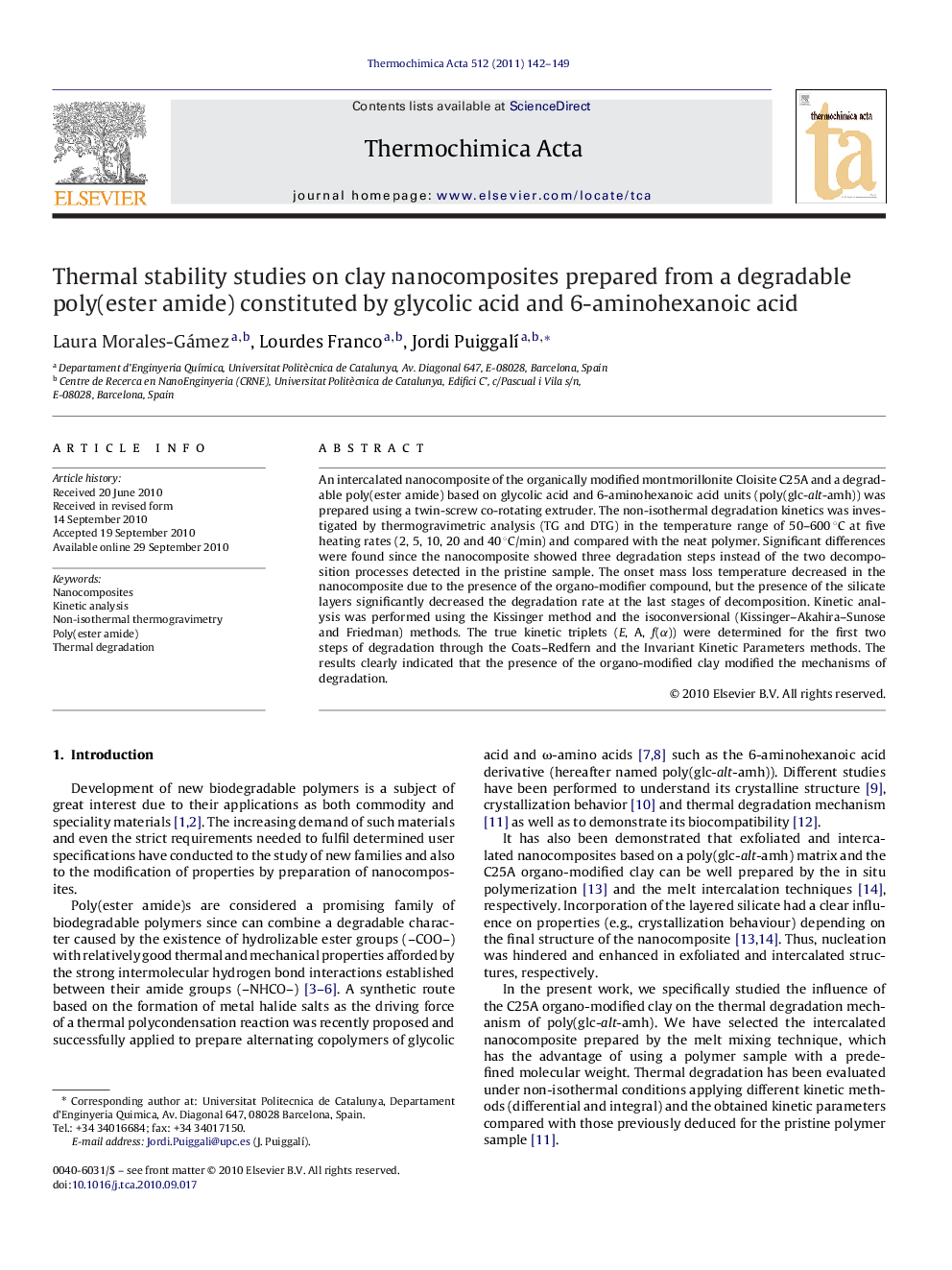| کد مقاله | کد نشریه | سال انتشار | مقاله انگلیسی | نسخه تمام متن |
|---|---|---|---|---|
| 674678 | 1459572 | 2011 | 8 صفحه PDF | دانلود رایگان |

An intercalated nanocomposite of the organically modified montmorillonite Cloisite C25A and a degradable poly(ester amide) based on glycolic acid and 6-aminohexanoic acid units (poly(glc-alt-amh)) was prepared using a twin-screw co-rotating extruder. The non-isothermal degradation kinetics was investigated by thermogravimetric analysis (TG and DTG) in the temperature range of 50–600 °C at five heating rates (2, 5, 10, 20 and 40 °C/min) and compared with the neat polymer. Significant differences were found since the nanocomposite showed three degradation steps instead of the two decomposition processes detected in the pristine sample. The onset mass loss temperature decreased in the nanocomposite due to the presence of the organo-modifier compound, but the presence of the silicate layers significantly decreased the degradation rate at the last stages of decomposition. Kinetic analysis was performed using the Kissinger method and the isoconversional (Kissinger–Akahira–Sunose and Friedman) methods. The true kinetic triplets (E, A, f(α)) were determined for the first two steps of degradation through the Coats–Redfern and the Invariant Kinetic Parameters methods. The results clearly indicated that the presence of the organo-modified clay modified the mechanisms of degradation.
Journal: Thermochimica Acta - Volume 512, Issues 1–2, 10 January 2011, Pages 142–149